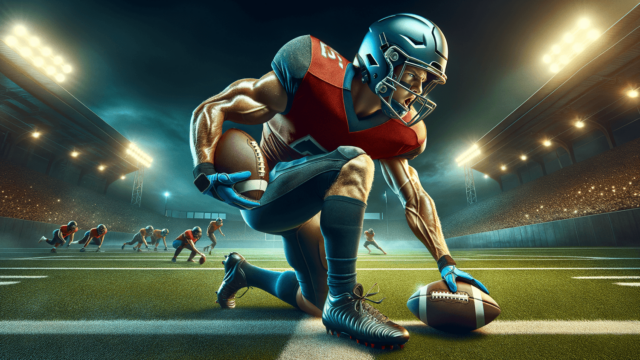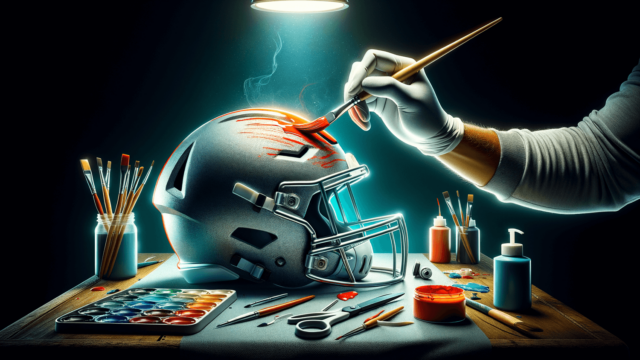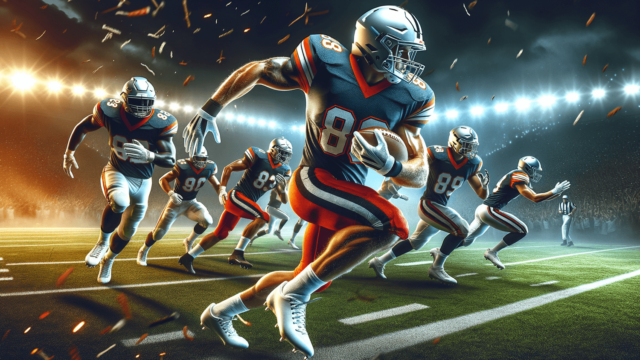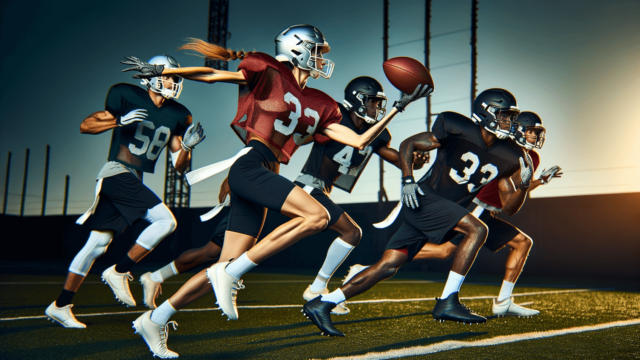
How to Attach a Mouthguard to a Football Helmet?
Written by: Football Universe
Last updated:

To attach a mouthguard to a football helmet, first, obtain a strapped mouthguard and properly mold it to your teeth. Next, place the mouthguard’s strap through the helmet’s face mask, making sure it’s centered and secure. Finally, fasten the strap to the helmet’s chin strap or face mask using the provided attachment, ensuring a snug and comfortable fit during gameplay.
Introduction to Attaching a Mouthguard
Attaching a mouthguard to a football helmet is crucial for players’ safety and comfort during gameplay. This guide will provide simple, direct steps on how to properly attach a mouthguard to a helmet, ensuring a secure fit.
Step 1: Choosing the Right Mouthguard
When purchasing a mouthguard, it’s important to select one with a strap. The strap not only helps attach the mouthguard to the helmet but also allows quick access and prevents loss during play. Ensure the mouthguard provides comfort, protection, and ease of breathing.
Types of Mouthguards
- Custom-fitted
- Boil-and-bite
- Stock
Step 2: Molding the Mouthguard
For the boil-and-bite mouthguard, follow the manufacturer’s instructions to properly mold it to your teeth. This process typically involves boiling the mouthguard, then biting down to make an imprint of your teeth. Custom-fitted mouthguards are created by dental professionals, while stock mouthguards don’t require molding but may be less comfortable.
Step 3: Attaching the Mouthguard to the Helmet
Now that you have your molded mouthguard with the strap, it’s time to attach it to the football helmet.
Position the Mouthguard
Thread the mouthguard’s strap through the openings of the helmet’s face mask, ensuring the mouthguard is centered and aligned with the player’s mouth.
Secure the Strap to the Helmet
Attach the strap to the face mask or chin strap using the provided attachment method. This is usually a small hook or loop that connects to the face mask or chin strap. Experiment with different settings to achieve a snug and comfortable fit.
Adjustment Tips
- Ensure the mouthguard sits comfortably and securely in the player’s mouth.
- Ensure that the strap’s length permits easy access to the mouthguard during breaks.
- Regularly inspect the strap for wear and tear, and replace if necessary.
Why Use a Mouthguard in Football?
Mouthguards play a vital role in protecting football players from dental injuries, jaw fractures, and concussions. By absorbing and dispersing the impact during collisions, mouthguards act as an essential protective measure for players of all ages and skill levels.
Maintenance and Care of Mouthguards
Proper care and maintenance of mouthguards will help to ensure their durability and effectiveness in protecting your mouth during play.
Cleaning Your Mouthguard
Always clean the mouthguard after use by using a toothbrush and non-abrasive toothpaste or by rinsing it with soap and water. You can also use a specialized mouthguard cleaning solution. Once cleaned, air-dry the mouthguard before storing.
Storing Your Mouthguard
Avoid exposing the mouthguard to direct sunlight or high temperatures, as this can cause distortion or damage. Instead, store it in a vented container to allow proper airflow and prevent bacterial buildup.
Check for Signs of Wear
Regularly inspect your mouthguard for signs of wear or damage. If you notice any tearing, thinning, or structural changes, replace the mouthguard to ensure adequate protection.
Choosing the Right Helmet
Proper head protection is essential for football players. When selecting a helmet, consider factors such as sizing, features, and certification to ensure a safe and comfortable fit during play.
Helmet Sizing
Use a flexible measuring tape to measure the circumference of the player’s head just above the ears. Consult the helmet manufacturer’s size chart to find the appropriate size based on the measurement.
Helmet Features
Consider features such as padding, face mask compatibility, adjustable chin straps, and ventilation when choosing a helmet. A combination of comfort, safety, and durability should be the primary focus.
Helmet Certification
Ensure that the helmet meets the safety standards set by organizations like the National Operating Committee on Standards for Athletic Equipment (NOCSAE). This certification guarantees that the helmet meets safety and performance requirements.
Helmet and Mouthguard Maintenance
It’s essential to maintain both your mouthguard and helmet, as proper care ensures optimal functionality and protection on the field.
FAQ Section: Attaching a Mouthguard to a Football Helmet
In this FAQ section, we address some common questions and concerns related to attaching a mouthguard to a football helmet, ensuring your safety and comfort on the field.
How often should I replace my mouthguard?
The replacement frequency depends on the mouthguard’s condition and usage. Regularly check for signs of wear, such as tears or thinning, and replace as necessary. A general rule is to replace your mouthguard every sports season or every six months for more frequent players.
Can I wear a mouthguard if I have braces?
Yes, you can wear a mouthguard with braces. In fact, it is strongly recommended to protect your braces and mouth from injury. Some mouthguards are specifically designed for use with braces, providing a comfortable fit and accommodating orthodontic changes.
What if my mouthguard isn’t comfortable anymore?
If your mouthguard is uncomfortable or doesn’t fit properly, you may need to remold it (for boil-and-bite types) or replace it. An ill-fitting mouthguard can lead to discomfort or inadequate protection during play.
How do I ensure my football helmet fits properly?
To ensure a proper helmet fit, measure the player’s head circumference just above the ears, and consult the helmet manufacturer’s size chart for the correct size. The helmet should fit snugly, with the chin strap securely fastened and the face mask properly aligned. Avoid helmets that slide, rotate, or lift easily off the head.
Can I use an unstrapped mouthguard in football?
While unstrapped mouthguards provide the same level of protection as strapped ones, they can be more challenging to manage on the field. Strapped mouthguards conveniently connect to the helmet, preventing loss and allowing easy access during breaks. Therefore, using a strapped mouthguard is recommended in football.
Featured Posts
- No pillar pages found.





